
When I told my sweet-toothed nieces and nephews that I was making their beloved speculoos cookies, their response was blank incomprehension … until I clarified the link with the brown sugar and cinnamon-flavoured spread they eat by the jar-load. Oh, they said, faces lighting up as far as teenage cool allowed: you mean Biscoff! It seems Lotus, the Belgian company that produces those snappy little biscuits you get in the hairdressers, has recently rebranded speculoos, presumably for ease of pronunciation. Biscuits for coffee; they now do what they say on the packet.
Whatever you call them, however, they’re a close relative of the much older, and more boldly spiced speculaas, a descendant of the medieval pepper cakes that Belgian food writer Regula Ysewijn describes as “the Low Countries gingerbread”. Unlike its plastic-wrapped cousins, speculaas come in many shapes and sizes and, though they’re eaten throughout the year, Ysewijn tells me that St Nicholas-shaped ones are particularly popular around the Christmas period. Worry not, you don’t need a special mould to make a gift that even grumpy adolescents will enjoy– just say the magic “B” word, and they might even crack a smile.
The sugar
Ysewijn’s lovely book of festive baking recipes from the Low Countries, Dark Rye and Honey Cake, includes an essay on her home town of Antwerp’s history as the 16th-century sugar capital of Europe, touching upon the surprisingly complex matter of the variety of brown sugar that’s used in Belgium. The type known as kandij, she explains, is made from white beet sugar slowly and repeatedly heated until it caramelises and crystallises. Sadly, this proves impossible to get hold of in London (well, not without paying for a single packet to be sent across the North Sea), but thankfully Ysewijn reassures readers that the brown sugars common elsewhere in the world, made from white sugar coloured and flavoured with molasses, can be substituted in her recipes. (Muscovado sugar, which has a stronger molasses flavour, is a less close match.)
Pastry chef Stella Parks, writing for the US-based website Serious Eats, claims that, “in Belgium … sugar cane was historically unavailable, leading sugar beet refiners to develop a different sort of brown sugar, one made with refined sucrose and caramel … So, instead of the acidic, malty, slightly bitter, and vaguely fruity taste of molasses, Belgian brown sugar gives Biscoff a backbone of caramel flavour. That means no American brown sugar will ever do the trick. Fortunately, homemade caramel sugar is kiiiiiinda my thing. Throw a bag of refined white sugar in a low oven, stir from time to time, and in about five hours you’ll have a deeply caramelised sugar perfect for homemade Biscoff.”
Ysewijn scoffs at the notion that cane sugar was scarce, or that a domestic cook can recreate kandij sugar (“You should see the ovens they have – the temperature and the process means it is impossible … it makes huge crystals, like geode stones. It is heated and reheated and reheated”), but, nevertheless, I give the caramelised sugar, which Ysewijn describes as more like Belgian light brown sugar, a try. Two tries, actually, because the first lot turns from toasted sugar to dark caramel in the time it takes me to fail to jump-start my car in the rain – the second, which I watch like a hawk for three hours, is more successful, and has a pronounced caramel flavour, but without the richness and depth of the dark brown sugar the other recipes use. If you’re really keen to recreate Biscoff, then track down some proper kandij sugar, otherwise stick with the more interesting, bittersweet soft dark variety.
There’s no getting away from the fact this is a sweet biscuit, though the recipes I try divide between those, such as Ysewijn’s, pastry chef Sebastien Rouxel’s and Helen Goh and Yotam Ottolenghi’s, that use about half as much sugar to flour, and the likes of Parks’ and Ruth Van Waerebeek’s versions that call for equal amounts, or even slightly more. A higher sugar content makes the speculaas incredibly crunchy (like speculoos), but also, of course, very sweet, and I prefer spice to be the dominant flavour.
Rouxel uses a little honey in his book Thomas Keller Bouchon Bakery – less, I suspect, because of honey’s historic role in European baking, and more because of its moisture-retaining properties, which help keep biscuits soft. Soft is not what I’m after here, though – soft is for chocolate-chip cookies. Hard and snappy seems far preferable, so I’m going to leave out the honey. I do like the slightly gritty crunch of Rouxel’s granulated sugar crystals, though, so I’ll be adding some of those to my recipe instead.
The fat
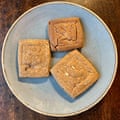
Ysewijn gives two options for her speculaas recipe – one using more butter, which she describes as “more delicate” and prone to spreading out in the oven, and a plainer alternative better suited to stamping with a pattern. This is the least rich biscuit I try, followed by the one from Goh and Ottolenghi in their book Sweet, then Parks, Rouxel, and, finally, Van Waerebeek’s from The Taste of Belgium, which contains almost twice as much butter per weight of flour, as well as a whole egg, and proves so soft that it’s impossible to cut out, even when properly chilled, forcing me to bake it as one enormous biscuit. It tastes great – extremely rich and crunchy, thanks to the high sugar content – but if you can’t shape it, there’s little hope of turning it into a snowflake, let alone St Nicholas. A more moderate approach therefore seems wise: if you want something overtly buttery, make shortbread.
Van Waerebeek’s is the only recipe to deploy an egg. Eggs are great at creating volume in baked goods, which makes them ova non grata here, where we want to keep the dough dense and snappy, as opposed to light and crumbly. Instead, I’ll be hydrating my dough with milk (Parks uses water, but milk’s lower moisture content will help keep the dough tight in the oven). It also strikes me that melting the butter, rather than creaming it with the sugar to trap air pockets, as in the other recipes, will help in this direction, too. I must admit this appears to be completely untraditional, so if you’d prefer to beat the butter and sugar in the approved fashion, don’t let me stop you.
Lotus biscuits are vegan because they use palm oil. If you’d like to keep yours dairy-free, there are many plant-based recipes online, or simply have a go at the below using margarine and see how you get on.
The dry goods
Ysewijn tells readers that speculaas can be made with a mix of wholemeal or rye flour and the standard wheat version, which can itself be replaced by white rye flour – if you go down those routes, however, you may need to add a little more milk, because wholemeal doughs tend to be thirstier than those made with more refined flours. To be honest, though I try Ysewijn’s recipe with the white rye variety, the sugar and spices obscure its flavour, so I wouldn’t both buying any in specially; that said, this does seem to be a fairly adaptable recipe, flour-wise, as long as you adjust the hydration accordingly.
Van Waerebeek and Rouxel both use a proportion of cake flour, which, I learn from Nigella Lawson’s website, is “a finely milled, very low protein flour … which is … bleached, which affects the flour by causing the flour molecules to repel liquid, bind fats more efficiently and stabilise the gas bubbles produced by the raising agents. These factors can give a cake which rises more and has a fluffy, tender texture, particularly in cakes that have a high proportion of sugar.” Though not easily available here, thanks to the ban on bleached flours, Nigella’s team suggests cutting plain flour with cornflour to reduce the protein levels, which I try – though I’m more interested in cornflour’s ability to soak up moisture, which will minimise spreading.
Ysewijn adds ground almonds to her dough, which gives them a slightly nubbly texture – I prefer a more homogenous crispness – but I do like the flaked almonds she scatters over the baking tray before shaping the dough, because they add a little extra crunch, as well as a sweet, nutty flavour. Parks has gone deep into the Lotus recipe, noting that “virtually all commercial speculoos, including Biscoff, include soy flour, likely as an emulsifier. Having lived in Japan, I know firsthand how delicious roasted soy flour can be, so I didn’t want to brush it off as a strictly industrial thing. It’s an ingredient I often use at home – I sprinkle it over vanilla ice-cream and I add it to homemade graham crackers for an extra dose of nuttiness – so I decided to give it a try in my version of Biscoff as well. I found that even just a half-teaspoon improved the texture of my dough, and gave the finished cookies a slightly nutty aroma.” (Oddly, it really does remind me of Biscoff, though more because of the very slightly bitter, almost sesame-like edge to the flavour, which I’m not particularly keen on, so if anyone wants an almost-full bag of kinako flour …?)
Everyone uses bicarbonate of soda as a raising agent, though, like Ysewijn, and Goh and Ottolenghi, I’ll be keeping this to a minimum; enough to keep the biscuits from turning into crackers, but not so much that they balloon in the oven.
The spices
The simplest biscuits I try, Rouxel’s, are flavoured with cinnamon alone. While not unpleasant, this feels like putting just gravy on your turkey when you could have bread sauce and cranberry relish as well. Van Waerebeek and Parks include ginger and ground cloves and/or nutmeg, with the latter also going for cardamom and aniseed. Ysewijn leaves out the aniseed, but adds coriander, allspice, mace and the deliciously medieval-scented long pepper, while Goh and Ottolenghi pop in aniseed and white pepper. I favour a punchy, peppery heat, but choose whatever appeals on ingredient list and taste until the mix suits your palate.
Goh and Ottolenghi make a version known as gevulde, or stuffed speculaas, folded around a sweet, almondy filling studded with mixed peel. Though not strictly the same recipe, I couldn’t resist giving it a try, and I’m pleased to say it was worth the effort. Utterly delicious.
Shaping and baking
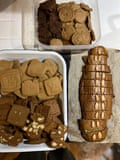
Though I can’t confirm that speculaas will be better if the dough is left overnight, as some sages suggest, to give the flavour more time to develop, they will certainly look neater if the dough is well chilled, both before and after rolling and cutting, and if it’s baked in a hot oven until the biscuits are beginning to brown around the edges – a tip from Ysewijn that proves very handy when dealing with different shapes cooking at different rates.
Leave to cool completely on the tray, so they crisp up, then keep in an airtight container. Though not traditional, speculaas do look rather festive when lightly dusted with icing sugar before serving, as Rouxel suggests.
Perfect speculaas
Prep 10 min
Chill 4 hr+
Cook 30-40 min
Makes About 25
1 tbsp ground cinnamon
½ tsp finely ground long pepper, or white or black pepper
½ tsp ground ginger
½ tsp ground cloves
½ tsp ground nutmeg
½ tsp ground cardamom
¼ tsp ground coriander
¼ tsp ground aniseed
250g plain flour
25g cornflour
½ tsp fine salt
½ tsp bicarbonate of soda
140g dark brown sugar
20g demerara or other granulated sugar
115g butter, melted
3 tbsp milk
2 tbsp flaked almonds (optional)
Icing sugar, to finish (optional)
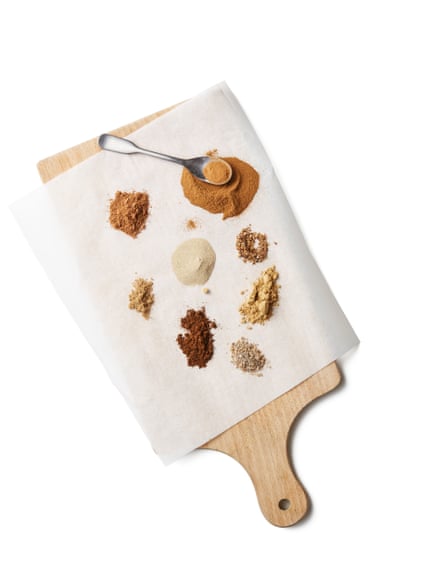
Make the spice mix by combining all the ingredients in a small bowl – feel free to leave out any you don’t have or like. Sift the flours, fine salt and bicarbonate of soda into another bowl.
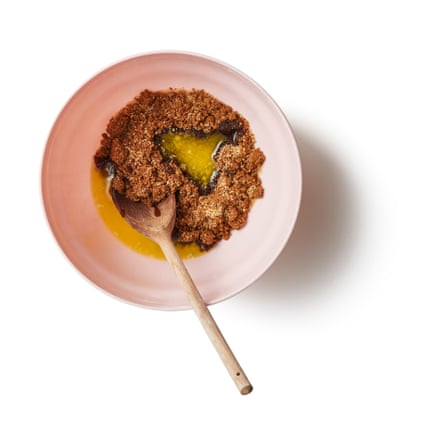
Stir the sugars and butter until combined, then add the spice mix, flour mix and milk, and mix until you have a coherent, fairly stiff dough.
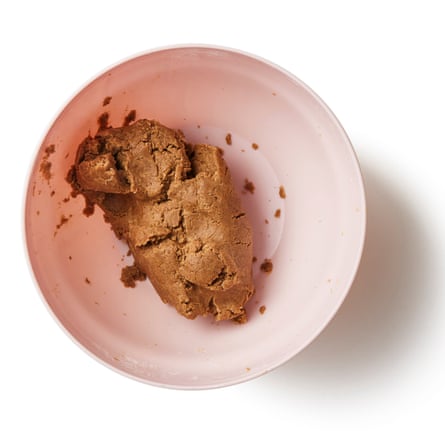
Knead the dough on a clean surface until smooth, then form into a flattish rectangle, wrap and chill for at least three hours, and up to three days.
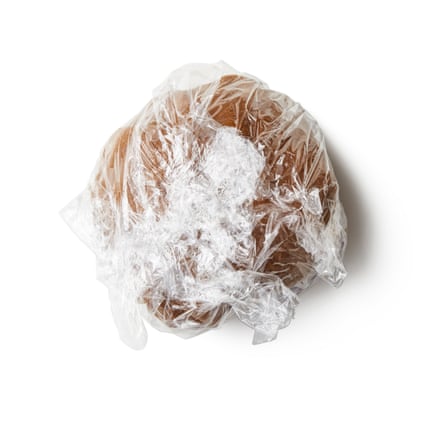
Unwrap the dough and scatter a work surface with the flaked almonds, if using. Roll out the dough on top of the nuts until it’s about 5mm thick (if it cracks, rub with a little water to smooth out), then cut or mould into your desired shapes.

Arrange on two trays lined with baking paper or silicone mats, then cover and chill for at least an hour.

Heat the oven to 180C (160C fan)/350F/gas 4. Bake the cookies for 25-30 minutes, or until they’re starting to darken around the edges (the exact time will depend on the size of your speculaas), then remove and leave to cool completely on the tray. Dust with icing sugar, if you like, before serving.
-
Speculoos v speculaas – if you have a preference in the spiced biscuit department, which team are you on, and why? Or has the relentless rise of the “hairdresser biscuit” put you off them altogether?



